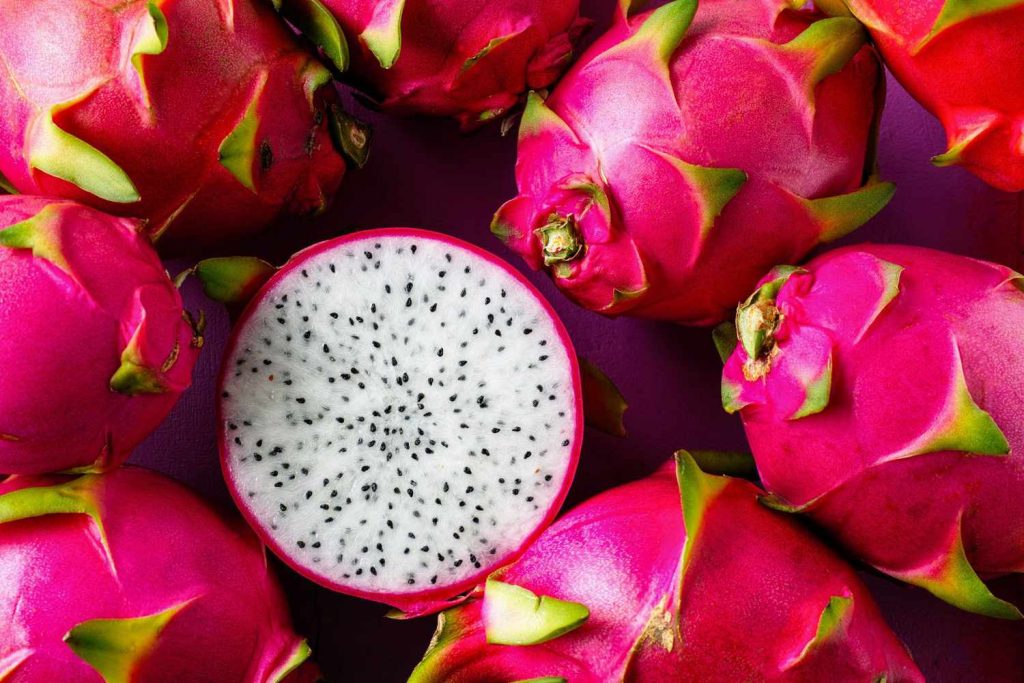JAKARTA, incaschool.sch.id – Dragon fruit, also known as pitaya, has surged in popularity in recent years thanks to its striking appearance, vivid colors, and impressive health benefits. With rising demand for this exotic fruit, adopting sustainable farming methods is becoming crucial to promote eco-friendly and economically sound production. This article delves into the key principles of dragon fruit cultivation, shares insights from successful sustainable farms, and looks ahead to the promising future of this remarkable crop.
Understanding Dragon Fruit

Dragon fruit is the fruit of several different cactus species, primarily belonging to the genus Hylocereus and Selenicereus. It is characterized by its striking exterior, which can be pink or yellow with green, scale-like leaves. Inside, the flesh is typically white or red with tiny black seeds. The fruit is not only visually appealing but also rich in vitamins, antioxidants, and dietary fiber, making it a popular choice among health-conscious consumers.
Sustainable Practices in Dragon Fruit Farming
- Soil Health Management
Healthy soil is the foundation of sustainable agriculture. Dragon fruit thrives in well-draining, sandy soils with a pH level between 6 and 7. Sustainable orchards focus on enhancing soil health through practices such as:- Organic Amendments: Incorporating compost and organic fertilizers improves soil structure and nutrient content.
- Crop Rotation: Practicing crop rotation with dragon fruit helps maintain soil fertility and minimizes the risk of pest accumulation.
- Water Conservation
Dragon fruit is drought-tolerant but requires adequate moisture during its growing season. Sustainable orchards implement water conservation techniques, including:- Drip Irrigation: This method delivers water directly to the plant roots, minimizing waste and ensuring efficient use of water resources.
- Rainwater Harvesting: Collecting and storing rainwater can supplement irrigation needs and reduce reliance on groundwater.
- Integrated Pest Management (IPM)
Reducing chemical pesticide use is crucial for sustainable farming. IPM strategies for dragon fruit include:- Biological Controls: Introducing beneficial insects, such as ladybugs, can help control pest populations naturally.
- Cultural Practices: Maintaining proper spacing between plants and ensuring good airflow can reduce the incidence of diseases and pests.
- Biodiversity and Companion Planting
Incorporating a variety of plants within and around dragon fruit orchards can enhance biodiversity and improve overall ecosystem health. Companion planting with herbs and flowers can attract pollinators and beneficial insects, promoting a balanced environment. - Minimal Chemical Inputs
Sustainable orchards prioritize organic practices and minimize the use of synthetic fertilizers and pesticides. This approach not only protects the environment but also appeals to consumers seeking organic produce.
Lessons Learned from Sustainable Dragon Fruit Orchards
- Community Engagement
Successful sustainable orchards often engage with local communities to share knowledge, resources, and best practices. This collaboration fosters a sense of stewardship and encourages more farmers to adopt sustainable methods. - Education and Training
Providing education and training for farmers on sustainable practices is vital for widespread adoption. Workshops, field days, and informational resources can empower growers to implement eco-friendly techniques effectively. - Market Access and Certification
Establishing connections with markets that value sustainably grown produce can enhance profitability. Seeking organic certification can also open doors to premium markets, attracting consumers willing to pay more for environmentally friendly products. - Research and Innovation
Ongoing research into sustainable practices, pest management, and climate adaptation is essential for the long-term success of dragon fruit farming. Collaborations between universities, agricultural organizations, and farmers can drive innovation and improve practices.
The Future of Dragon Fruit Farming
As the demand for dragon fruit continues to rise globally, sustainable farming practices will play a crucial role in ensuring its production remains viable. The lessons learned from sustainable orchards can guide the future of dragon fruit cultivation by:
- Promoting Resilience: Sustainable practices can help farmers adapt to climate change, ensuring that dragon fruit remains a reliable crop in changing environmental conditions.
- Enhancing Quality: By focusing on soil health, water management, and pest control, farmers can produce high-quality fruit that meets consumer expectations.
- Supporting Local Economies: Sustainable dragon fruit farming can create jobs and support local economies, providing opportunities for smallholder farmers and rural communities.
Conclusion: Embracing Sustainability in Dragon Fruit Farming
Dragon fruit farming is not just about producing a unique and nutritious fruit; it is also an opportunity to embrace sustainable agricultural practices that benefit the environment, communities, and economies. By learning from sustainable orchards and implementing eco-friendly techniques, farmers can cultivate dragon fruit in a way that preserves natural resources and meets the growing demand for healthy, sustainably produced food.
As consumers increasingly seek out sustainable options, dragon fruit has the potential to thrive as a symbol of modern agriculture that values both quality and environmental stewardship. By prioritizing sustainability, we can ensure that dragon fruit farming flourishes for generations to come.
Read also about News Integration to learn how combining multiple sources of information enhances media literacy, supports critical thinking, and provides a more complete view of current events.


